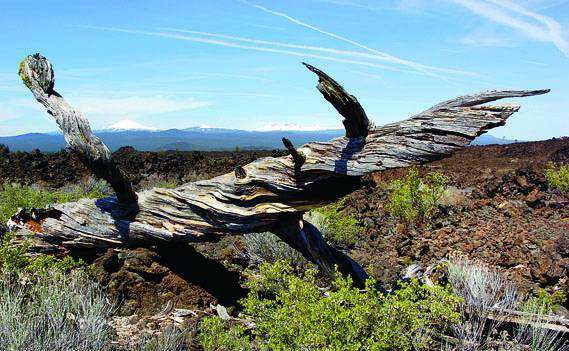Lava lands
Published 5:00 am Wednesday, May 2, 2007

- The Trail of the Molten Land in Newberry National Volcanic Monument south of Bend is an ideal place to get in touch with the regions volcanic underpinnings.
Lucky we live Central Oregon, eh?
Thats a familiar pidgin-flavored refrain among locals on the Big Island (just substitute Hawaii for Bend).
I used to live there and say that. Now I live here and say much the same thing.
I had the opportunity to revisit some old Big Island haunts last week and came away with a renewed appreciation for both places.
Hula, plate lunches and reefs teeming with colorful fish and lumbering sea turtles notwithstanding, there are numerous similarities. In both places, residents and visitors alike focus on doing fun things outside. Population growth presents problems in Central Oregons cities as well as Hilo and Kailua, Kona on the Big Isle. Perhaps the most striking similarity is the volcanic underpinnings of each place.
You dont have to travel 2,500 miles to see the fiery fruits of Vulcans labors. Central Oregon is built on basalt. A day trip to Newberry National Volcanic Monument (or a workday lunch on the banks of the Upper Deschutes River) brings us face to face with lava, long cooled.
A journey to Hawaii, however, brings the impossibly long view of geologic time hurtling into the here and now. Kilauea Volcano has been erupting since 1983, pumping massive amounts of molten lava down the eastern slope of Kilauea Volcano. Its forming new land right this moment.
It has also destroyed 189 structures, most of them houses in the now-defunct town of Kalapana. I watched that happen 17 years ago as a reporter for the Hawaii Tribune Herald. Time after time, a lobe of molten lava would inch its way up to a house only to stop its advance for a few days or weeks while the attention shifted elsewhere. But, inexorably, the viscous focus would return and the house would succumb to a magma-torched fire as reporters, tourists and family members stood nearby and witnessed the slow-motion devastation of this drive-in eruption.
Last week, I stood on that very same flow that devastated an entire community and saw palm and ohia trees as well as ferns and one large flowering plumeria emerging from the big field of ropy pahoehoe lava that covered Kalapana and nearby Kaimu Black Sand Beach in 1990. The people have been persistent as well; a handful of houses have been rebuilt atop the new flow, even as Kilauea continues to spew a few miles south and upslope. From my vantage, a couple hundred yards east of the parking lot at what was once the northern edge of town, I could see the current eruption from afar. The leading edge was quite a ways upslope, where the lava was cutting a swath through the ohia forest. I could see the smoke and volcanic plume, remember what it was like to be up close.
I was with G. Brad Lewis, the extraordinary Hawaii photographer who specializes in intimate portraits of the eruption, red rivers of lava pouring into the ocean and expanding the islands shore. I had followed him over a steaming field of black, laced with a network of cracks where lava coursed like blood not far beneath. The soles of my boots had melted in places; my adrenal gland was on high alert. All the while, Lewis casually snapped photos of the lavas fiery entrance into the ocean, perhaps inured by familiarity with this front-row seat on creation. Then I saw the dorsal fin of a tiger shark, a 6- or 7-footer taking in this scene from a completely different perspective.
It was the closest Ive ever been to an epiphany in the outdoors. I knew this was powerful stuff; I just didnt know exactly what it meant.
Except that I was seeing what many havent and wont, and that one bad step could be my last. I rely on that memory whenever Im out in the Badlands or Lava Lands and start wondering what it was like 7,000 years ago when this lava popped and burbled and eventually solidified.
If you can get to Hawaii, by all means do. The eruption is a world-class natural phenomenon. If you cant, Lava Lands Visitor Center inside the Newberry National Volcanic Monument is a wonderful place to see what makes a volcano tick.
There are several trails and exhibits explaining what went on here.
And keep this in mind as you see all that burnt-brownie lava shimmering lifelessly in the spring sunshine: South Sister could be the next one to blow.
If you go
Getting there: To reach the Lava Lands Visitor Center, drive 13 miles south of Bend on U.S. Highway 97, then right into the Visitor Center. Lava Butte, which erupted 7,000 years ago, looms over Lava Lands.
Cost: Admission to Newberry National Volcanic Monument is $5 per car, per day.
Contact: Bend-Fort Rock Ranger District, Deschutes National Forest, 383-4000, Hawaii Volcanoes National Park, 808-985-6000.






